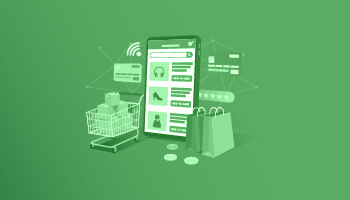The e-commerce universe has envisaged a significant boom post pandemic. With people across the globe utilizing e-commerce websites to get everything from essential grocery items to designer bags, the growth of the e-commerce industry has been immense. In an article published in 2021, RoiRevolution noted that the US e-commerce retail sales leaped by 34.5% in 2020 and nearly 16% in 2021 while predicting that in 2022, the US e-commerce sales alone can surpass $1 trillion.
While it is true that the global e-commerce sector is witnessing a grand success currently, many newer enterprises are also joining the bandwagon regularly, making the industry more competitive and challenging than ever before. According to the leading e-commerce marketing agencies, online businesses constantly need to amp up their strategies to be in business and outsmart their competitors. Here are some exciting trends that vouch for safe e-commerce growth in 2022
1. AI-Assisted Upselling and Cross-Selling


Instead of depending on behavioral assumptions of consumers based on their previous sales for upselling or cross-selling products, utilizing AI to upsell and cross-sell will be the primary e-commerce trend in 2022. By predicting the right customers for upselling and cross-selling, e-commerce agencies will see positive growth in their sales and refrain from annoying customers who are not interested in purchasing any additional item.
2. Automated B2B Transaction


Although a standard practice in B2C sales, automation in B2B transactions is yet to be integrated by most e-commerce enterprises. Since B2B enterprises depend on long-term contracts of high value, having automated transactions essentially simplifies the process, keeps the data well-organized and digitized from the beginning, thus leaving lesser scope for human error.
3. Use of Augmented Reality to Purchase


Even though the e-commerce sector is witnessing a major boom, some people prefer shopping from physical stores just to experience the product first-hand. While e-commerce cannot help in trials, using Augmented Reality or AR to help prospective consumers experience a product digitally in their own environment is an assured way of growing an e-commerce business. For example, in the past couple of years, AR revolutionized the makeup industry by helping customers select the right makeup products online suited to their skin tone without any human intervention. It is predicted that in 2022 alone, nearly 101.6 million consumers will use AR at least once a month.
4. Changes to Consumer Privacy Preferences


With major data breaches occurring in 2021, consumers are now more aware of their virtual security than ever before. As a growing e-commerce business, it is imperative to bring positive changes to consumer privacy preferences. Simple measures like letting your privacy policy be enumerated in short and simple words on various areas of the website or app – like, on the product page, or during checkout – go a long way to building efficient customer relationships.
5. Livestream Shopping


Livestream shopping became a rage in 2021 – something to be considered a prime e-commerce trend in 2022. Popularized by social media, in this type of shopping, influencers and celebrities generally showcase, review, and speak about a particular item or service while speaking to their followers. The trend became such a fascination among consumers that e-commerce enterprises in the US made $6 billion from Livestream during the festival season, which is around twice the revenue ticked a year before.
6. More Personalized Marketing and Products


Who doesn’t like personalized shopping experiences? Personalized marketing strategies with the help of AI go a long way to showcase the right products and services to the right consumers, thus attracting high revenues. This stands true for personalized services and products as well. Hyper-personalized services and products – something as simple as a pre-filled destination address or offering a catalog curated based on the user’s previous preferences – help elevate the shopping experience, increasing sales and building brand loyalty.
7. Multi-Channel Customer Support


Excellent customer service is a priority in any e-commerce enterprise. For fast and efficient customer support, e-commerce enterprises are gearing towards multi-channel customer support. The customer shall be able to solve his grievance through his chosen mode – call support, email support, call back support, or chat support. Specialized chatbot tools can also be used to solve simpler customer grievances, thus enhancing the customer experience while taking some load off your workforce.
8. Renewed Focus on Sustainability


“Sustainability” and “ethical” are no more just buzzwords to increase follower counts. With more information available than ever before, customers are trying to make conscious choices when it comes to shopping online. Numerous governments are also making policies that align with environmental and long-term sustainability. Hence, in 2022, growing e-commerce businesses should focus more on utilizing sustainable business practices, like paying proper wages to workers, using eco-friendly options while packaging, and reducing their carbon footprint as much as possible.
9. Smarter Mobile Shopping Tools


With more and more customers preferring to shop on the go from mobile phones, e-commerce businesses should aim at making their websites mobile-friendly or having lighter apps that open properly even in areas with lower network coverage for positive e-commerce growth in 2022. For enterprises having both online and offline presence, a GPS-enabled shopping system that allows customers to buy from the app and pick the products from stores may also work favorably.
10. Continued Focus on Direct-to-Customer Business Model


More conscious customers also mean customers who want to know where the products are coming from, who are the people who made their products, and if the channel is sustainable for everyone involved. While not all types of e-commerce enterprises can resonate with this business model, those involved in artisanal products and attires have a great chance to reap benefits from this e-commerce trend in 2022.
Conclusion


Although these 2022 e-commerce trends are pretty exciting and urge new e-commerce enterprises to work harder and smarter, implementing them is not always seamless. Different business modules require different tactics to implement these trends, and this is exactly where Amura Marketing Technologies can help you.
One of the foremost e-commerce marketing agencies, Amura Marketing Technologies promises digital growth with formulae tailor-made for the advancement of your business. Connect with Amura Marketing Technologies today to unfurl newer horizons for your e-commerce enterprise.
